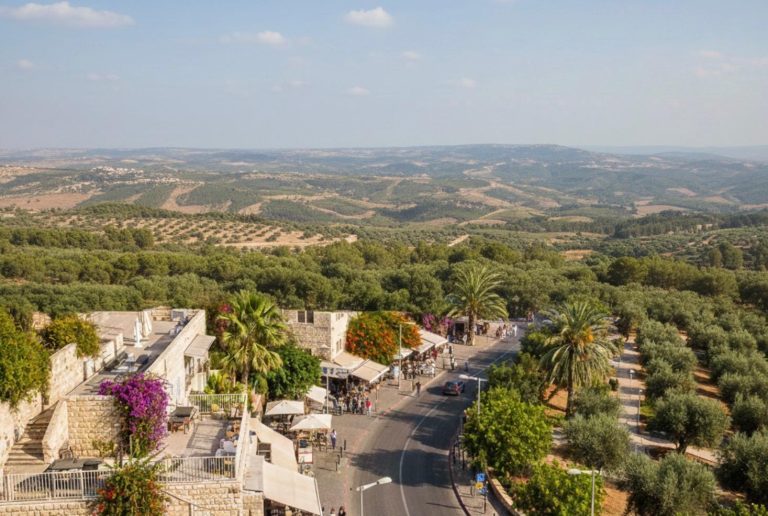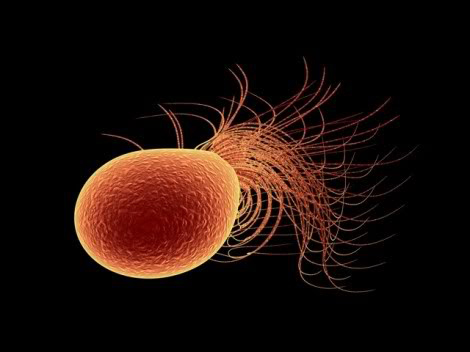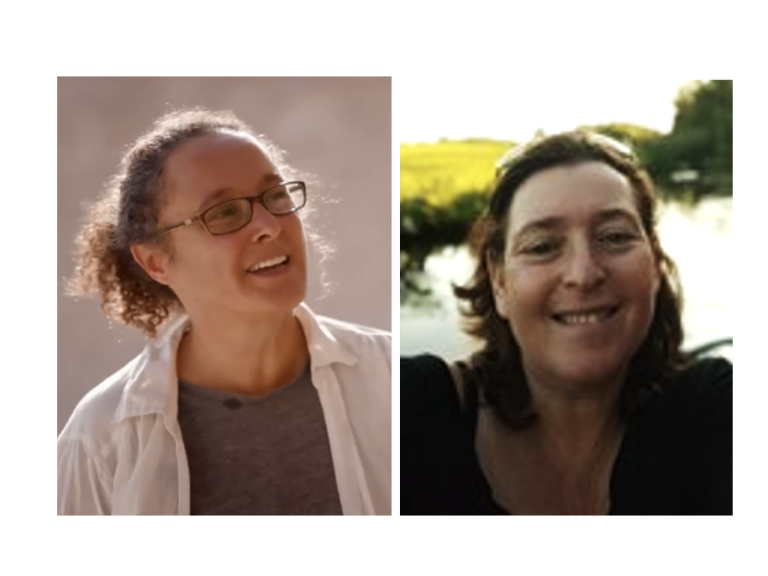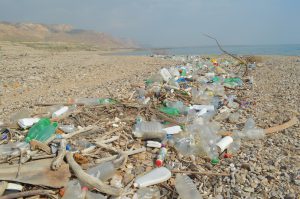L'Université Ben Gourion du Néguev (Israël) met au point un matériau contre la poussière sur les panneaux solaires

[:fr]
Des chercheurs de l’université de Ben Gourion du Néguev (sud d’Israël) travaillent sur un matériau capable de lutter contre les amas de poussière ou de sable sur les panneaux solaires. Ils se sont inspirés de la feuille du lotus, dont les feuilles sont hautement hydrophobes.
L’innovation permettrait d’optimiser le rendement des panneaux solaires, mais aussi de réduire l’entretien de centrales installées dans des régions désertiques.
Inspirés du lotus
Les feuilles du lotus disposent d’une propriété autonettoyante appelée « super-hydrophobie ». Son action est résumée sur une publication de la chambre de commerce et d’industrie (CCI) dédiée au biomimétisme : « Posées sur une feuille de lotus, les gouttes d’eau restent sphériques car les feuilles possèdent des propriétés hydrophobes permettant aux feuilles de lotus de se protéger de l’eau. À cause de leur très faible contact avec la feuille, les gouttes n’adhèrent presque pas et roulent en emportant les poussières ». La publication précise que la feuille de lotus a déjà inspiré la conception de peintures autonettoyantes, et est également utilisée dans le domaine spatial.
Ici aussi, c’est cette propriété que les chercheurs ont utilisé pour leur expérimentation. Selon eux, des modifications apportées à la surface des panneaux solaires pourraient grandement réduire la quantité de poussière qui s’y accumule. Cela permettrait d’optimiser le rendement offert par les panneaux, en particulier ceux installés à proximité de régions désertiques, comme c’est le cas de la centrale de Noor Abu Dhabi, la plus grande centrale solaire indépendante au monde.
Jusqu’à 98 % de poussières éliminées
Les chercheurs ont donc exploré les propriétés d’un substrat de silicium, un semi-conducteur déjà utilisé dans les cellules photovoltaïques, afin qu’il imite les propriétés d’une feuille de lotus. Ils ont préparé quatre échantillons différents, certains disposant de nano-textures afin de mieux cerner leur impact sur le mécanisme d’auto-nettoyage. La proportion de poussières éliminées a ainsi augmenté à 41 % pour le revêtement hydrophile dépourvu de nano-textures. Il a augmenté à 98 % pour le revêtement super-hydrophobe nano-texturé. Les chercheurs ont confirmé ces résultats en mesurant l’adhérence d’une particule de taille micrométrique à l’aide d’un microscope.
Tabea Heckenthaler, une étudiante en maîtrise à l’Institut de recherche sur l’eau de l’université de Düsseldorf a déclaré : « Nous avons conclu que la raison de l’élimination accrue des particules n’est pas un faible frottement entre les gouttelettes et les surfaces super-hydrophobes. C’est plutôt l’augmentation des forces qui détache les particules des surfaces. Les méthodes expérimentales que nous avons utilisées et le critère d’élimination des particules que nous en avons retiré peuvent être mis en œuvre pour concevoir des surfaces autonettoyantes présentant différentes chimies et/ou textures ».
Reste à savoir si ces conclusions seront reprises pour de futures conceptions.
Publication dans Phys.org 9 déc. 2019
Auteur : Benoît Théry pour clubic.com 15 déc. 2019
[:en]
Taking a cue from the self-cleaning properties of the lotus leaf, researchers at Ben-Gurion University of the Negev have shed new light on microscopic forces and mechanisms that can be optimized to remove dust from solar panels to maintain efficiency and light absorption. The new technique removed 98% of dust particles.
In a new study published in ACS Langmuir, the researchers confirmed that modifying the surface properties of solar panels may greatly reduce the amount of dust remaining on the surface, and significantly increase the potential of solar energy harvesting applications in the desert.
Dust adhesion on solar panels is a major challenge to energy harvesting through photovoltaic cells and solar thermal collectors. New solutions are necessary to maintain maximum collection efficiency in high dust density areas such as the Negev desert in Israel.
« In nature, we observe that the lotus leaf remains dust and pathogen free due to its nanotextured surface, and a thin wax, hydrophobic coating that repels water, » says Tabea Heckenthaler, a master’s student from Düsseldorf Germany at the BGU Zuckerberg Institute for Water Research, Jacob Blaustein Institutes for Desert Research. « In the desert, dust accumulates on the surface of solar cells and it’s labor-intensive to clean them constantly, so we’re trying to mimic this behavior on a solar cell. »
The researchers explored the effect of modifying a silicon substrate (Si), a semiconductor used in photovoltaic cells, to mimic the self-cleaning properties of the lotus leaf, as water rolls down the leaves and removes contamination.
It is known that superhydrophobicity reduces the friction between water droplets and the surface, thus allowing water drops to slide clean particles from surfaces. However, the forces that attach and detach particles from surfaces during the self-cleaning mechanism and the effect of nanotextures on these forces are not fully understood.
To shed light on these forces and the effect of nanotexture on them, the researchers prepared four silicon-based samples relevant to solar panels: (1) smooth hydrophillic (2) nanotextured hydrophilic surfaces and (3) smooth hydrophobic (4) nanotextured hydrophobic surfaces. This was achieved by wet-chemically etching the surface to create nanowires on the surface, and additionally applying a hydrophobic coating.
Particle removal increased from 41% on hydrophilic smooth Si wafers to 98% on superhydrophobic Si-based nanotextured surfaces. The researchers confirmed these results by measuring the adhesion of a micron-sized particle to the flat and nanotextured substrate using an atomic force microscope. They found that the adhesion in water is reduced by a factor of 30.
« We determined that the reason for the increased particle removal is not low friction between the droplets and the superhydrophobic surfaces, » Heckenthaler says. « Rather, it is the increase in the forces that can detach particles from the surfaces. The experimental methods we used and the criterion for particle removal we derived can be implemented to engineer self-cleaning surfaces exhibiting different chemistries and/or textures. »
###
Other researchers that contributed to « The Self-Cleaning Mechanism: Why Nanotexture and Hydrophobicity Matter » include Prof. Muhammad Bashouti, Sumesh Sadhujan and Prakash Natarajan of BGU’s Swiss Institute for Dryland Environmental and Energy Research, as well as Yakov Morgenstern, and Tabea Heckenthaler’s advisor, Dr. Yair Kaufman of the Zuckerberg Institute.
About American Associates, Ben-Gurion University of the Negev
American Associates, Ben-Gurion University of the Negev (AABGU) plays a vital role in sustaining David Ben-Gurion’s vision: creating a world-class institution of education and research in the Israeli desert, nurturing the Negev community and sharing the University’s expertise locally and around the globe. As Ben-Gurion University of the Negev (BGU) looks ahead to turning 50 in 2020, AABGU imagines a future that goes beyond the walls of academia. It is a future where BGU invents a new world and inspires a vision for a stronger Israel and its next generation of leaders. Together with supporters, AABGU will help the University foster excellence in teaching, research and outreach to the communities of the Negev for the next 50 years and beyond. Visit vision.aabgu.org to learn more. AABGU, headquartered in Manhattan, has nine regional offices throughout the United States. For more information visit http://www.
[:]





